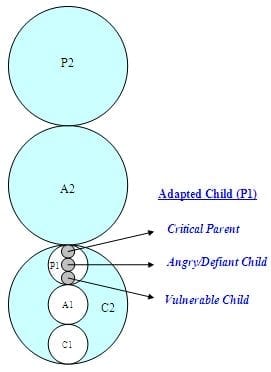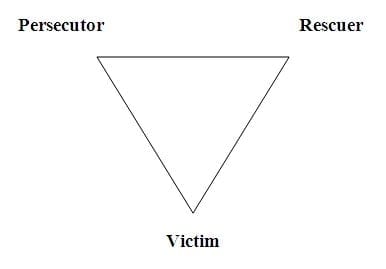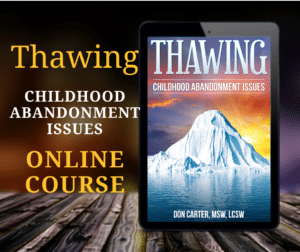
Fear of Abandonment & the Inner Child
Many more therapists, including John Bradshaw, have contributed greatly to the evolution of Inner Child Therapies. The “Inner Child” or “Inner Children” are metaphors for the neural networks that store the essence of the child who suffered emotional trauma and fear of abandonment.
TA’s Second Order Structural Analysis offered the first real “Mapping” of these networks. As I mentioned many times in these pages — The Internet-of-the-Mind consists of neural networks… embedded in networks… embedded in networks… and so on.
Introducing the Wounded Inner Children…
The Child ES – specifically the Adapted Child – is the primary location of the accumulated trauma. Here we have ego-states… embedded in ego states… embedded in ego states.

The Angry/Defiant Child is the neural network for the eight to twelve-year-old part of us that contains all the thoughts, feelings, attitudes and coping style of that time in our lives.
The Vulnerable Child is the ES of the one to a seven-year-old part of us that carries all the woundedness, trauma and fear of abandonment from our childhood.
This is the part of us that Bradshaw and Whitfield speak of that has “gone into hiding” deep inside. In other words, it has been repressed or “disowned” by the subconscious mind in order to protect us from the pain and fear of abandonment it carries.
The main problem with repressed and disowned parts of self is that they don’t stay repressed…they get triggered just like any other part of self. When they do is when we have “reactions” that are grounded in fear of abandonment. When we are “triggered” by these survival-oriented ego-states, we typically find ourselves in some variation of the Drama Triangle...
Introduction to the Drama Triangle
From Thawing Toxic Relationships Online Course
TA and the Drama Triangle

The Victim: This player gets their needs met by having other people take care of them. They tend to blame others for what’s wrong in their lives and play the “why don’t you, yes but” game or the “I can’t do that, because” game.
Victim Ego States…
- Stuck in First Position the Victim vacillates between the feelings of the Vulnerable/Needy Child and the Angry/Rebellious Child – One-moment expressing helplessness and hopelessness…the next throwing a temper tantrum.
- When the Victim can’t get someone to persecute them, they turn their own Critical Parent inward and persecute themselves. When they can get someone to persecute them, perhaps by playing a game of “Kick Me”, they can feel fully justified in their Victim role.
The Rescuer: Due to an underlying fear of abandonment, the Rescuer needs to be needed and so they attach themselves to a Victim… Rescuers frequently notice that others always come to them with their problems and don’t know why they do that.
The Rescuer subconsciously helps keep the Victim dependent on them by playing into their Victimhood – doing everything for that person rather than allowing them to experience that they can do it for themselves.
Rescuer Ego States…
- Stuck in Second Position the Rescuer has to be “all-about-others”…This person usually spent much of their childhood care-taking or unsuccessfully trying to please a wounded parent…doing for parents what they needed the parent to do for them (role reversal). As an adult, the roles are switched – the Rescuer is the adult now and spends her/his time care-taking and trying to please a Projected Vulnerable Child…Being stuck in the second position, one way the Rescuer can experience his/her vulnerable child is to project that ES onto someone else. It goes something like this…The Rescuer projects their Vulnerable Child onto the person they see as the Victim… they then over-identify with the Victim and feel compelled to step in to “fix” or “rescue”.In this way, the Rescuer is vicariously and compulsively trying to meet the unmet needs of their own Projected Vulnerable Child. So…ironically…compulsive care-taking of others, then, is really “all-about-me”.
- The Rescuer also spends considerable time in the Critical Parent ES…though not usually in an outward fashion. Instead, the Rescuer’s Critical Parent sends subconscious messages like this to the Victim…”Don’t worry, I know that you’re incompetent and you need me to take care of you.”When things go wrong the Rescuer can turn that Critical Parent on him/her self…minus the nurturing tone – “You can’t even take care of a simple little problem like that! What good are you?” In this case, the CP is likely to be an introject (a recording of one of their own parents – called Introjected Critical Parent).
- Rescuing is a covert Victim role when the Angry/Defiant Child protests… “Look at how I have to sacrifice and take care of everyone else!” or “I’m only trying to help and this is the thanks I get for it!”
The Persecutor: Stuck in First Position this player is “all-about-me” and externalizes their contempt through shameless and blameless behavior.
- In the same way, the rescuer points their Critical Parent recordings inward – toward themselves… the Persecutor primarily Projects their Critical Parent recordings outward – toward others… “If all these other stupid people would do things my way the world would be a much better place!”
- Persecutors tend to disown their Vulnerable/Needy Child by subconsciously pushing it out of their awareness – i.e., repression. However, the Victims Vulnerable/Needy Behavior triggers that same ES in the persecutor. The Persecutor’s angry and critical responses to the Vulnerable Child in the Victim are subconscious re-enactments of how s/he drove his/her “disowned” Vulnerable Child into hiding…In this way, the Persecutor is projecting his/her own Vulnerable Child onto the Victim. So…again, ironically… the Persecutor is actually talking to a part of him/her self whenever they persecute.
- Another Persecutor ES is the intrusive, Angry/Defiant Child who really believes…”If it weren’t for you I wouldn’t have to act & feel this way!” – a covert Victim role because it is an attempt to make the Victim responsible for the Persecutor’s own loss of control.




